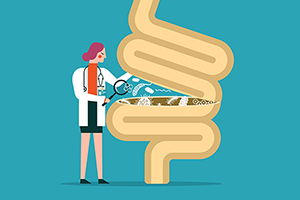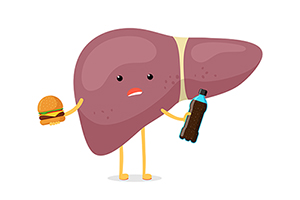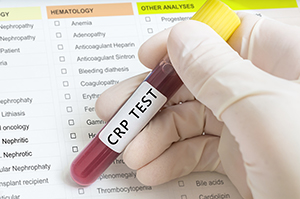



| By Dr. Jacob Teitelbaum
This article originally appeared on Dr. Teitelbaum’s website, Vitality 101.
This is the next installment of my “Ten-Point Tune-Up” series, a ten-step approach to energizing your body, organ by organ, and system by system. This week, I’d like to discuss what is perhaps the most important system of all: your digestive system. Just consider a few of the wonders of your digestive tract:
 The thousands of taste buds on your tongue—each one a complex structure with a taste pore, “taste hairs,” sensory cells and nerve fibers—are capable of generating more than 100,000 different flavors. (Mother Nature really wants you to enjoy your next meal!)
The thousands of taste buds on your tongue—each one a complex structure with a taste pore, “taste hairs,” sensory cells and nerve fibers—are capable of generating more than 100,000 different flavors. (Mother Nature really wants you to enjoy your next meal!)When your digestive system is purring, you usually feel great. When it’s not, you feel lousy: bloated, queasy, cramped, gassy, in pain, and plagued by food sensitivities. Like the pain of heartburn that afflicts 120 million Americans, who spend $14 billion a year on acid-suppressing drugs. Or irritable bowel syndrome, which affects 60 million Americans, two-thirds of them woman. Or more than 50% of Americans over 50 who have hemorrhoids.
Good digestion should be as natural as eating. Why is bad digestion so common?
To conventional doctors, including most gastroenterologists, the underlying cause of most digestive ills remains a mystery. That’s why medicine’s so-called cures are usually nothing more than a pill to quiet symptoms or surgery to remove the offending organ. But there are four key blocks to optimal digestion—and natural, easy methods to remove those blocks, optimize digestion, and feel great.
Time to tune-up your digestive tract!
Mention “enzymes” to a conventional digestive expert, and he’ll probably talk about the digestive enzymes your body manufactures, like the amylase from salivary glands that digests carbohydrate, or the pepsin from that stomach that digests protein. But there’s a critical fact about digestive enzymes that doctors aren’t taught: they play second fiddle in the digestive symphony to the enzymes in food. Yes, the most important enzymes are those normally found in food, like the enzymes that ripen an apple or a tomato.
Sadly, food manufacturers learned long ago that removing the enzymes lengthens shelf life (and increases profitability). So that’s just what they did, using chemicals, gassing, and other processing techniques to strip out the natural enzymes. The upside: the food doesn’t rot on the shelf. The downside: the food becomes hard to digest, causing indigestion.
The solution to this problem: At larger meals, take a nutritional supplement containing plant-based digestive enzymes. (Enzymes from animal sources don’t work well in the acid environment of the stomach.) Long-term use of these supplements can dramatically improve your health and well-being. I recommend CompleteGest® (from Enzymatic Therapy). Take two capsules with each meal as needed to help digest food properly.
Heartburn is incredibly common, with millions of people taking powerful heartburn drugs like Nexium, Prevacid and Prilosec. Studies show that when used for more than a few months, these proton-pump inhibitors can erode bones, weaken the immune system, steal vital nutrients—and even increase your risk of dying from a heart attack! There are more benign drugs and natural alternatives that work just as well. Unfortunately, acid blocker meds are quite addictive, causing rebound acid hypersecretion when stopped—even in those who never had indigestion before the medication! This translates to “Heartburn from Hell” if you stop it suddenly.
So here’s how to wean off the acid blockers comfortably:
After doing this treatment regimen for 1-2 months and you are feeling better, ask your doctor if you can stop your prescription antacids and switch to over the counter Tagamet (cimetidine) 400 mg 2-3x day, and stay on the DGL licorice and CompleteGest. The Tagamet will decrease your stomach acid instead of totally turning it off. By doing this, your body can slowly ease back to normal production of acid. Decrease the dose of Tagamet by 200 mg a day each 1-2 weeks. After you have weaned off the Tagamet for 2-3 weeks, you can change the DGL licorice to taking it as needed. If symptoms recur down the line, simply take the Immediate Heartburn Relief antacid whenever you get indigestion, and if persistent, resume the DGL licorice for a few weeks. Stay on the CompleteGest long term. Meanwhile, you’ll have broken your addiction to antacids and allowed your body to have the stomach acid it needs for proper digestion—and optimal health!
Your digestive tract (particularly your colon, the final section) is filled with so-called “friendly” bacteria, or probiotics. But friendly is an understatement—they’re downright generous! These good-guy germs help keep bad bacteria and disease-causing fungi under control; neutralize toxins; keep you regular; play a role in the manufacture of vitamins, essential fatty acids, and amino acids; and regulate hormones and cholesterol. Not bad for a bug! Here’s how to make sure those friendly bacteria crowd out any bad bacteria in your gut:
Though we think of declining estrogen as the hallmark of menopause, it's actually common for…

Up to 12 percent of Americans have ulcers at some point in life. Peptic ulcers…
Gallbladder disease is a modern illness. An estimated 20 million Americans have gallbladder disease. The…

There’s more to GI health than whether or not to take an acid-blocker. All too…

In the latest attempt to remove “stigma” from medical terminology, liver specialists have come up…

Q: My husband’s high sensitivity C-reactive protein (hs-CRP) is 1.62 and his homocysteine is 13.1. If…

Banish the Bloat: Leyla Weighs In with Tips and Insights

Our virtual voicemail is open 24/7, so there's no need to wait to submit your questions for Dr. Hoffman. Leave a message, and you may hear your question featured on the Intelligent Medicine radio program!